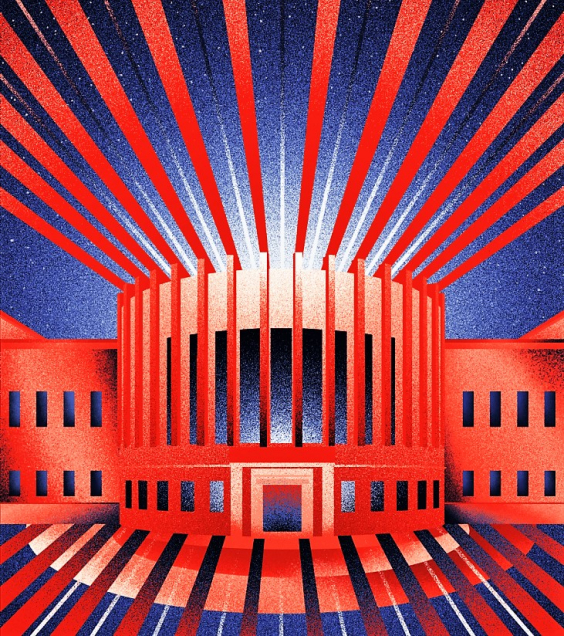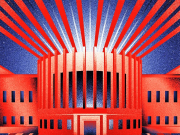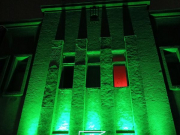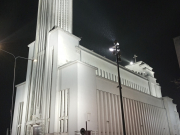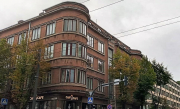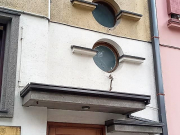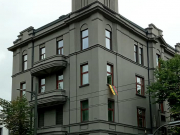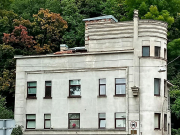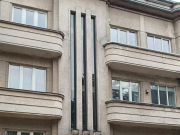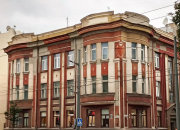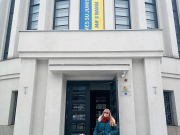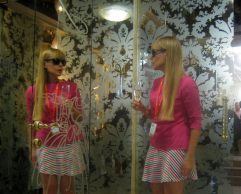Part I
2019 was declared the year of the Bauhaus. In Germany, two new buildings of the Bauhaus museums were opened in Weimar and Dessau. Then, for the first time, many people paid attention to Modernism architecture. But its value also lies in the fact that modernity begins with the modernism of the 1920s, with the development of the revolutionary thinking of avant-garde architects, their experiments with reinforced concrete and glass, with the game of forms and proportions instead of the exuberant decoration.
The process of including objects of modernism in the registers of cultural heritage is very slow, and the inertia of society is extremely strong. Even in Europe not all pearls of this period are still properly appreciated due to quite ambivalent relationship to it. The example of commemorating the Bauhaus inspired us to conduct our study of modernist architecture in Kherson (Ukraine). Uzhgorod in Western Ukraine (Czech Rondocubism, functionalism) did it together with us. One can easily understand my enthusiasm when I learned that Kaunas modernist heritage was declared a core to the program “Kaunas – European Capital of Culture for 2022”.
5 years of tremendous preparation work resulted in obvious success. I am very proud to be part of it as a witness, researcher, and media person.
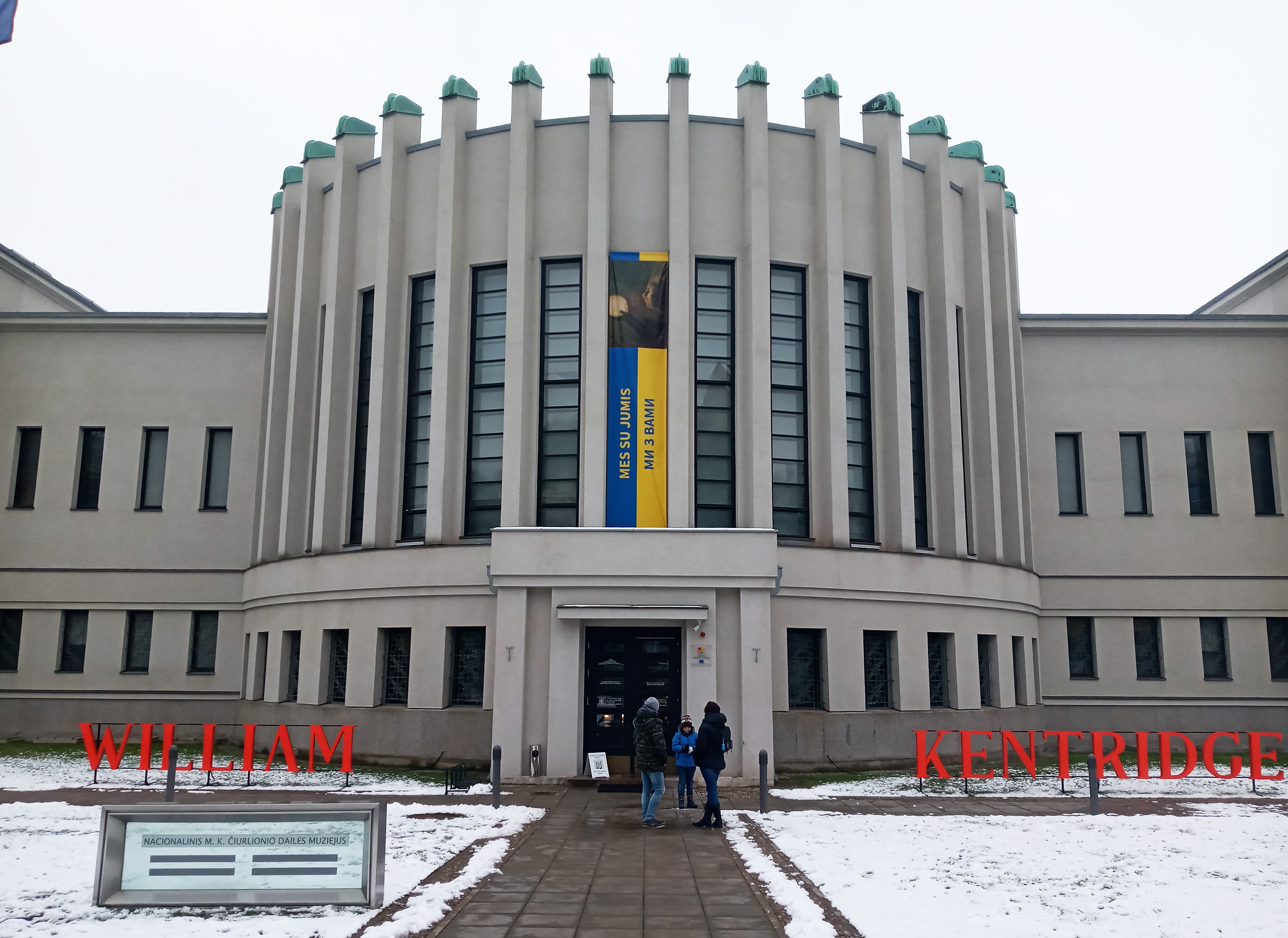
How it all began
I asked Vaidas Petrulis, a researcher of modernism in Kaunas, a professor at the Institute of Architecture and Construction of the Kaunas University of Technology, the organizer and moderator of the international conference “Modernism for the Future. Interpretations” (September 21-22, 2022), how the city turned into a modernist capital, with so astonishingly dense concentration of modernist buildings in the center that is absolutely unique in the European scale.
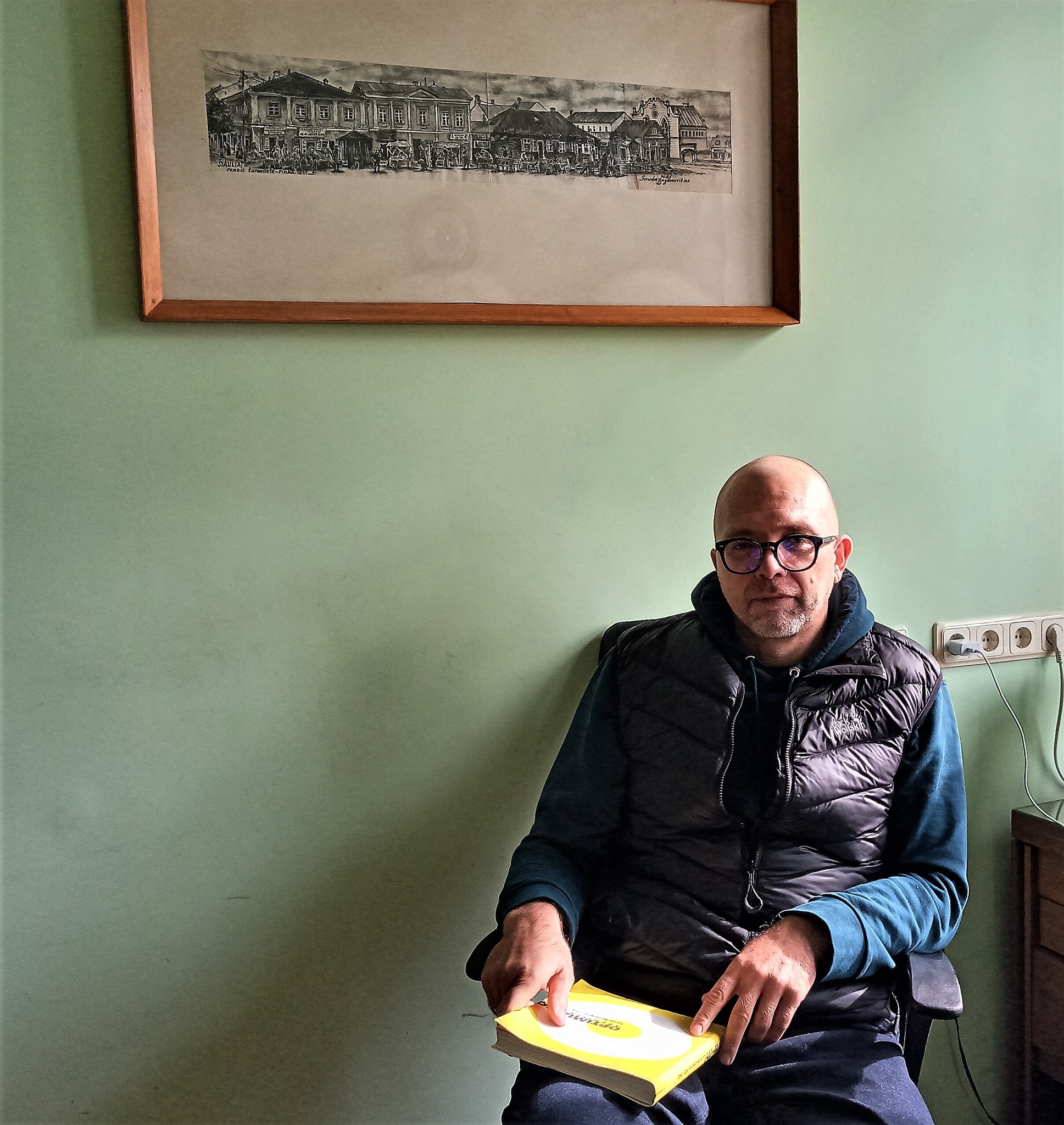
At the very beginning of the 20th century, Kaunas was a modest Russian garrison town. Immediately after the end of the First World War, on July 11, 1918, Lithuania gained independence. However, soon after that, in 1919, Poland occupied the historic capital of Vilnius, and the government of the Republic of Lithuania was forced to move to Kaunas, the country's second-largest city.
Thus, the former city of tsarist Russia became the temporary capital of the country until 1939. Perhaps the most important thing in Kaunas architecture in this period is the degree and speed of the transformation process. Its status as the capital provoked a huge construction boom aimed at creating the entire necessary infrastructure: government institutions, museums, educational institutions (universities, academies, and schools), corporate offices, hotels, industrial facilities, housing, and the general infrastructure of the city (pipelines, sewage, new transport system, roads, and parks).
During several decades of independence, Kaunas created a whole architectural layer. Together with recognized icons, private houses are probably the most numerous examples of the Kaunas school of modernism.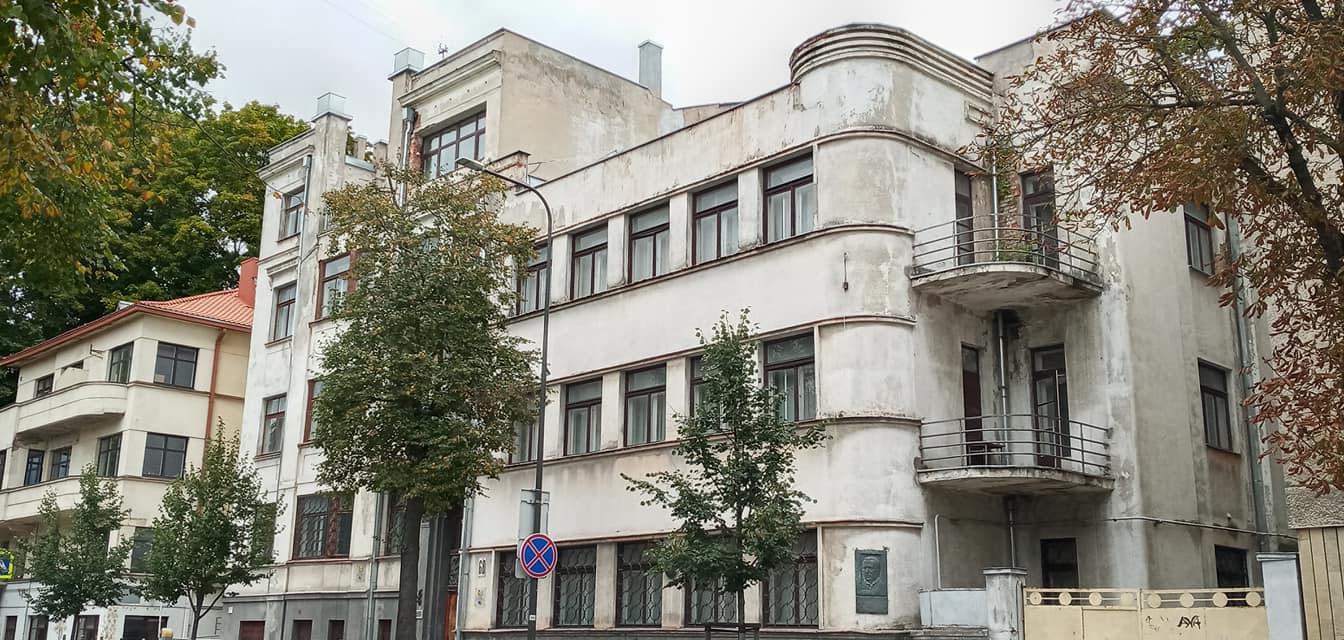
Civil servants and professionals such as doctors, lawyers, artists, and politicians began to reside in the city, creating a need for new institutional headquarters and housing for their employees. In total, more than 6,000 were built in less than 20 years and have survived to this day. In 1938, Kaunas attracted 68% of all Lithuanian investments in urban construction. The area of the city increased more than seven times (from 557 hectares in 1919 to 3940 hectares in 1939).
It is interesting how the transformation of aesthetic preferences in architecture took place. Various interpretations of historicism dominated during the first decade of independence. Neo-Baroque was seen as a local style due to symbolic references to Vilnius Baroque. The representative nature of the Bank of Lithuania or the Ministry of Justice was achieved through the use of the classical language of architecture. But new trends confidently paved the way for the young state. To great extent, it was a merit of the younger generation of Lithuanian architects who began to return from their studies at European universities (Rome, Prague, Berlin, etc.) and brought with them new ideas. Newspapers and journals began to explain the aesthetics of modernism, and local officials, after they visited Germany, England, and Sweden, brought back descriptions of the construction of schools, social housing, and other civic infrastructure.
Vladas Švipas, a student at the Bauhaus in 1927, wrote: “…architects who still design in historical styles must take responsibility for their preferences. These houses are mummies, corpses that will stand publicly for centuries."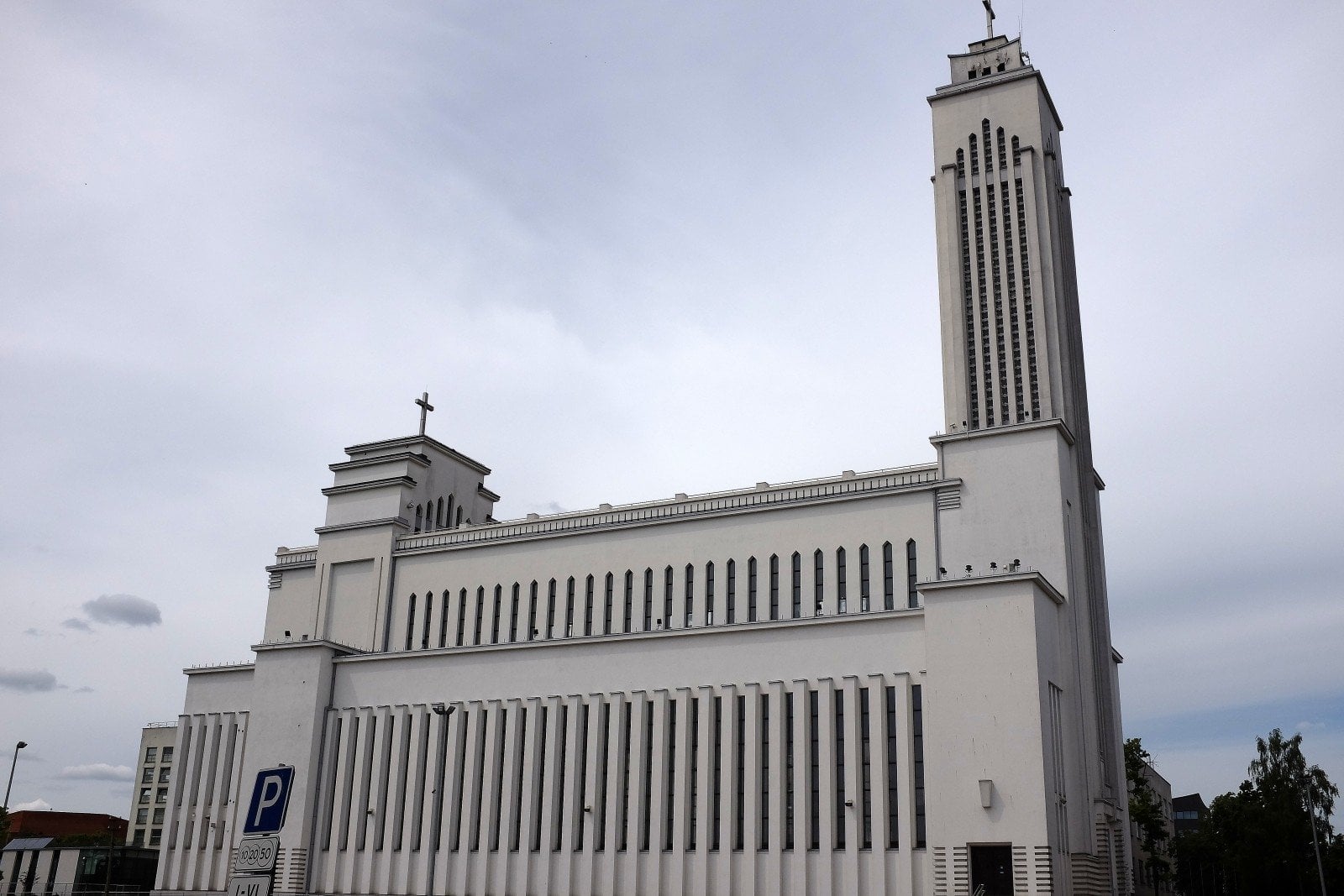
At the same time, it was a passionate search of national identity. Lithuanian modernism has always sought inspiration in national culture. Obviously, this was connected with the desire to build a strong national state. The architecture had a special mission - to create a unique urban environment and to demonstrate an architectural expression that was not similar to the heritage of Tsarist Russia. Decorative details created in the Lithuanian national style, which today can be associated with Art Deco, remained important features of Kaunas architecture throughout the period of independence. One of the convincing examples of modernist architecture and the Kaunas dialect is the Central Post Office building, designed in 1930 by Feliksas Vizbaras.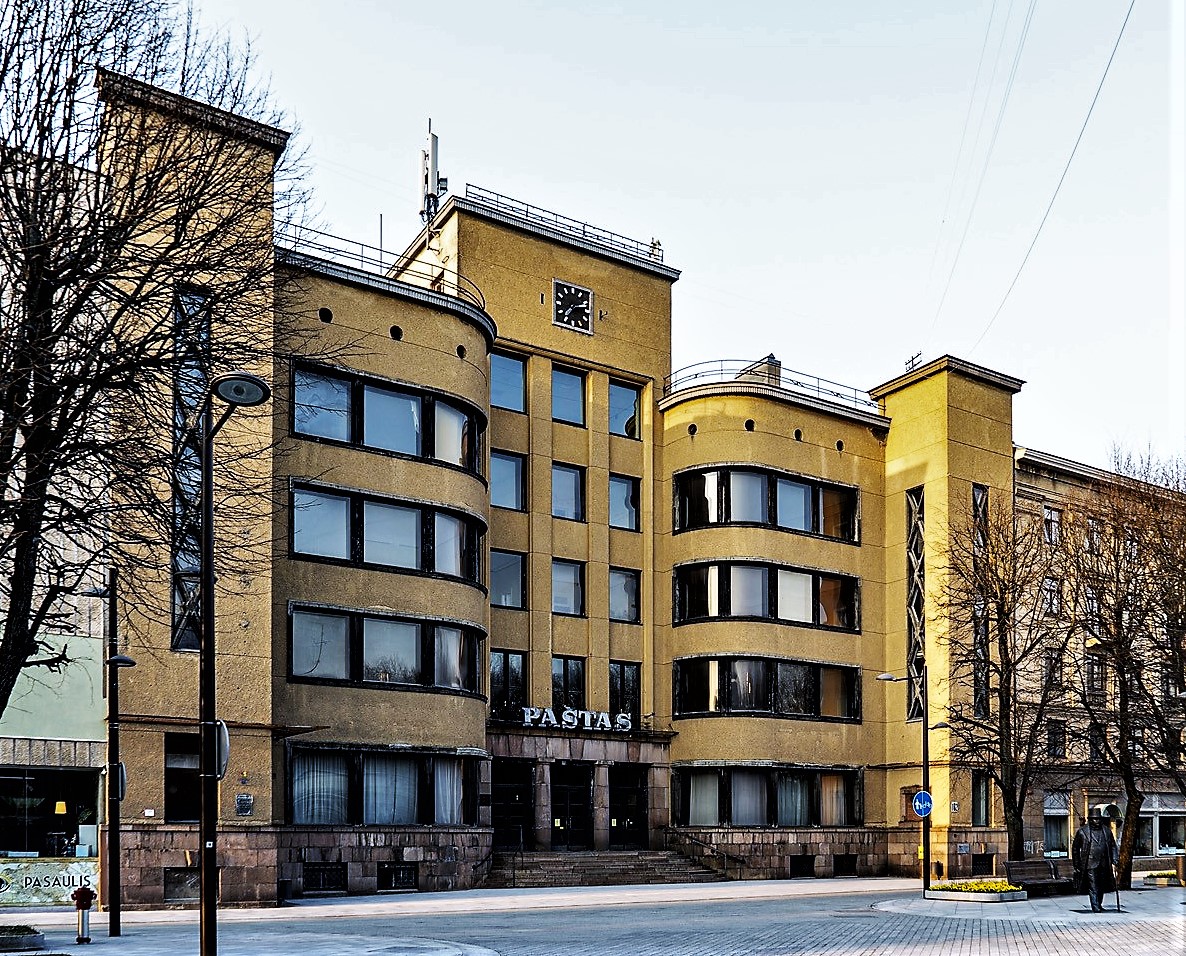
Generally, the architecture of the interwar period in Lithuania, and especially in Kaunas, is an interesting mixture of Art Nouveau, interpretations of the so-called "national style" and local architectural taste.
In twenty years, Kaunas has become a great example of petit modernisme: the city maintains a human dimension scale, has buildings of excellent architecture, and the established genius loci of the central part are still preserved.
The unique spirit of that period greatly contributed to the preservation of the aura of freedom and strong identity in the Soviet period. Some of the buildings were recognized as architectural monuments of local importance as early as 1972. After the restoration of Lithuania’s independence in 1990, Kaunas’ interwar legacy acquired broad recognition, thanks to the media attention, cultural events, special tours…
The UNESCO story
On April 15, 2015, a new glorious page appeared in this history. Brussels conferred the European Heritage Label on “1919–1940 Kaunas”. In the same year, Kaunas was awarded the title of the UNESCO Creative City of Design, with interwar heritage recognized as the main criterion for this designation. Architectural heritage was also mentioned in Kaunas' winning bid for the European Capital of Culture 2022. The cultural event plan included a program called Modernism for the Future (MoFu 360/365), which interprets the interwar heritage within a wider artistic, social and cultural context. In 2017, the modernist architecture of Kaunas was included in the preliminary UNESCO World Heritage List.
The programme coordinator, historian, and tour guide, Žilvinas Rynkšelis, told me the details of the process.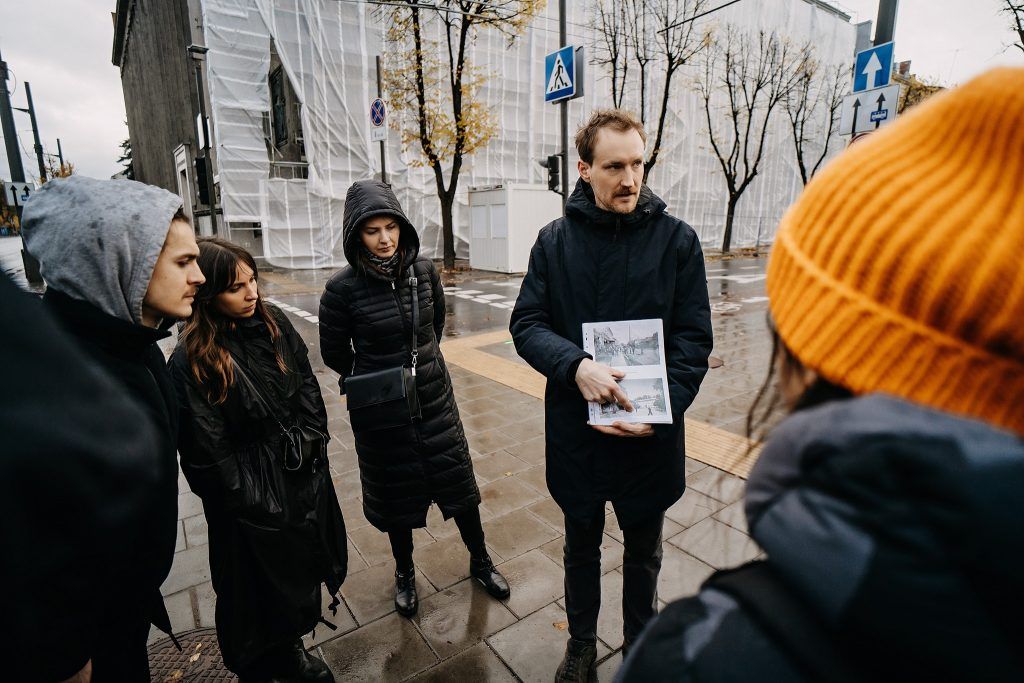
The Modernism for the Future Programme was created to prove the fact that it is not a top-down initiative, but the immense involvement of the heritage community.
The real challenge in the programme was the work of activists with residents of modernist residential buildings, and the creation of a whole community of conscious residents.
But when we talk about the heritage community, we mean not only the owners of houses and residents, but also other participants of the movement who help conduct architectural tours. These are artists, including those who interpret heritage through an artistic vision. I came to this project from the tour guide area. The idea of the project is a collaboration with all possible partners. Several tourist organizations work with us, some completely devoted themselves to architecture, and others introduced it as part of their programs. We were the first to take it so seriously before such tours had been organized only by university professors for students. Now, 5 years later, almost every week we organize a tour of different types of architecture.
The main difficulty is the slow realization of the importance of heritage and not yet very high involvement in our activities. The owners quite often change authentic windows to plastic ones, and only constant educational work can help here. To somehow prevent "vandalism", the municipalities compensate conscious owners for 50 or more percent of the costs for proper restoration.
Many do not want to be "public figures", but there are those who willingly give interviews and show their interiors. When Kaunas applied to UNESCO, an ICOMOS expert came to us to see if our application differed greatly from reality. I did a lot of work with owners to prove the world value of these objects. Surveying residents, we received very different answers. Moreover, they relied, rather, not on architectural value, but on sentimental memories, that is very personal things.
The very illustrative story is about the Central Post Office building (1930–1932). Although it is included in the Register of Cultural Values, it is not in a brilliant condition. In 2019, an auction was announced for its sale (1.3 million euros), but the public did not agree with this - who could guarantee that the new owner would be interested in preserving its authenticity? The auction was suspended, and the Ministry of Transport, which supervises JSC "Poshta Litvy", created an interdepartmental working group to develop a realistic plan for the revitalization of the building. One of the many proposals is the creation of a museum or a center of architecture there (a museum can scare away the public with its known conservatism).

By the way, the ICOMOS expert asked: "Do you have these initiatives coming from residents?" There are several indicators of people's involvement, for example, some publish photos of their homes on social media, tagging the Department of Heritage – did we do everything right? Protection of the Post Office is an example of a "grassroots approach". Members of the community began to send me photos, shared them on social media, organized a collection of signatures for a petition to save the building, in general, actively made noise and achieved the fact that the Minister of Culture included the building in the list of priority objects and it is considered an architectural monument.
The irony is that several iconic buildings are still not on the heritage list and have minimal protection. We are now in the process of reviewing our values because there are objects much more valuable than those already registered. There are also wonderful residential houses. And there are already examples of competent restoration, in which windows, doors, and other elements retain their original appearance.
We administered the Architecture of Optimism mobile exhibition, dedicated to the phenomenon of rapid modernist transformations in Kaunas and created in 2018 in honor of the 100th anniversary of the restoration of Lithuanian statehood, and its logo is an image of the round window of such a building, which is already iconic (a white circle on a yellow background).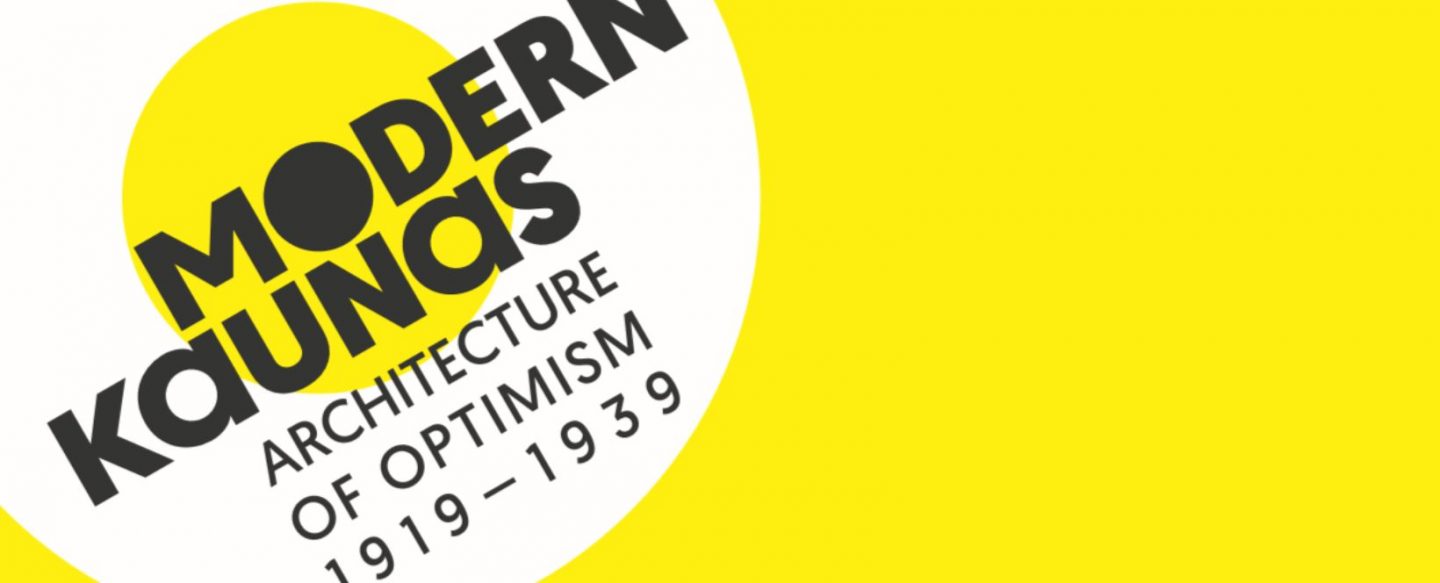
On the wave of attention to the heritage of the interwar period, the attitude to the modernist architecture of the Soviet era is also improving. Although typical objects from Moscow were planted, the young generation of Lithuanian architects tried to experiment, to make them local, to inherit the traditions of modernism, but with national features, and in Kaunas, there are quite nice buildings of that time.
In 2017, we launched a website where we publish modernist objects with their "profiles", asking people to share photos of such objects and their stories. This is not a database precisely, it is a map of personal stories that is constantly updated. We find one active person who knows someone else who is interested, and that's how the community is formed.
The curator of the Kaunas 2022, Rytis Zemkauskas also commented on the importance of the Programme:
Photo credit LithuanianStories-Marina Macrì
All this is about changing your mindset, without it, nothing will work. Resources must be invested in work with every resident of the city and district. A culture is a tool for changes in the mind, first of all. Kaunas needs to change its attitude to many things - its heritage, memory, which is very selective when it comes to uncomfortable pages of history, to how to make the city comfortable for life...
Modernism is something we are all proud of, but almost all buildings are on private property. The problem of local modernism is very “Soviet” since the modernism of Kaunas is the modernism of independent Lithuania, This was avant-garde architecture, inspired by Bauhaus and transatlantic travel, symbolizing the dream of a better future. And when the invaders came, they began to fight with beauty, realizing how important it is to destroy it, to erase it from people's memory. Many things fell into disrepair, and the facades needed to be cleaned, as well as our memory.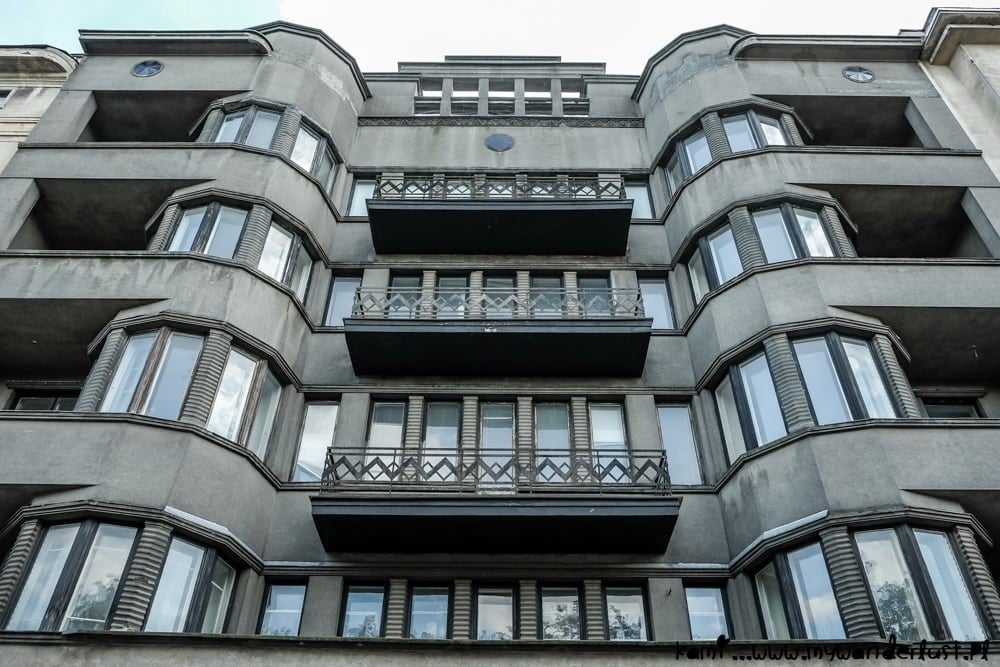
The task of the Modernism for the Future Programme is to change the attitude of the owners of modernist buildings and investors towards preserving the original design, and not disfiguring the facades with quick and cheap reconstruction. It is easy to talk about identity, it is even easier to lose its architectural embodiment. I live in such a house and understand how difficult it is sometimes to agree with the neighbors not to do an "upgrade" that cripples the original look. Of course, it is possible to appeal to the law, but it will never work without changing the attitude towards the heritage.
In this sense, the slogan "Architecture of Optimism" is very good - it invites you to join the return of the former avant-garde glory, and dreams of a prosperous future. The whole modernist movement was about it.
The futuristic look has ensured this architecture immortality, it perfectly fits into any technological period, modernity does not have the flair of ancient historicity.”
At the end of this fantastic year, Rytis Zemkauskas can proudly admit that all their efforts in the promotion strategy were not in vain. The metaphor of the Mythical Beast which at the initial point of its birth seemed something like a mascot of a sect, in a year became a part of the urban and digital culture, uniting people around the diverse legacy of Kaunas in various ways. Particularly, engaging them into the ranks of Modernism lovers.
The Kaunas case as the European Capital of Culture seems to be the extremely successful, as many initiatives appeared not one-day ones but long-term projects that continue having a big impact on the process of turning the city into a true oasis of contemporary culture with deep respect for its heritage.
Rytis emphasized that during this year Kaunas was attended by curators of the former and future cultural capitals and all recognized Kaunas as the best practice to follow these challenges and fuckups but the brilliant team guided by the CEO Virginija Vitkienė addressed them bravely, showing an example of how creative and winning can be a team of like-minded persons. The Contract has been signed by the residents and guests of the city and everyone appreciated these words:
“Every city is beautiful. Every city is a city of love. Every city is like Kaunas and Kaunas is like every city. Every city has suffered in the past. Every city wants to be happy in the future. People we know are good people. People we don't know are good people. People we don't understand are good people. My freedom depends on the freedom of others. Kaunas is forever. These points in the Contract reminded everyone to take care of themselves, others, and the city.”
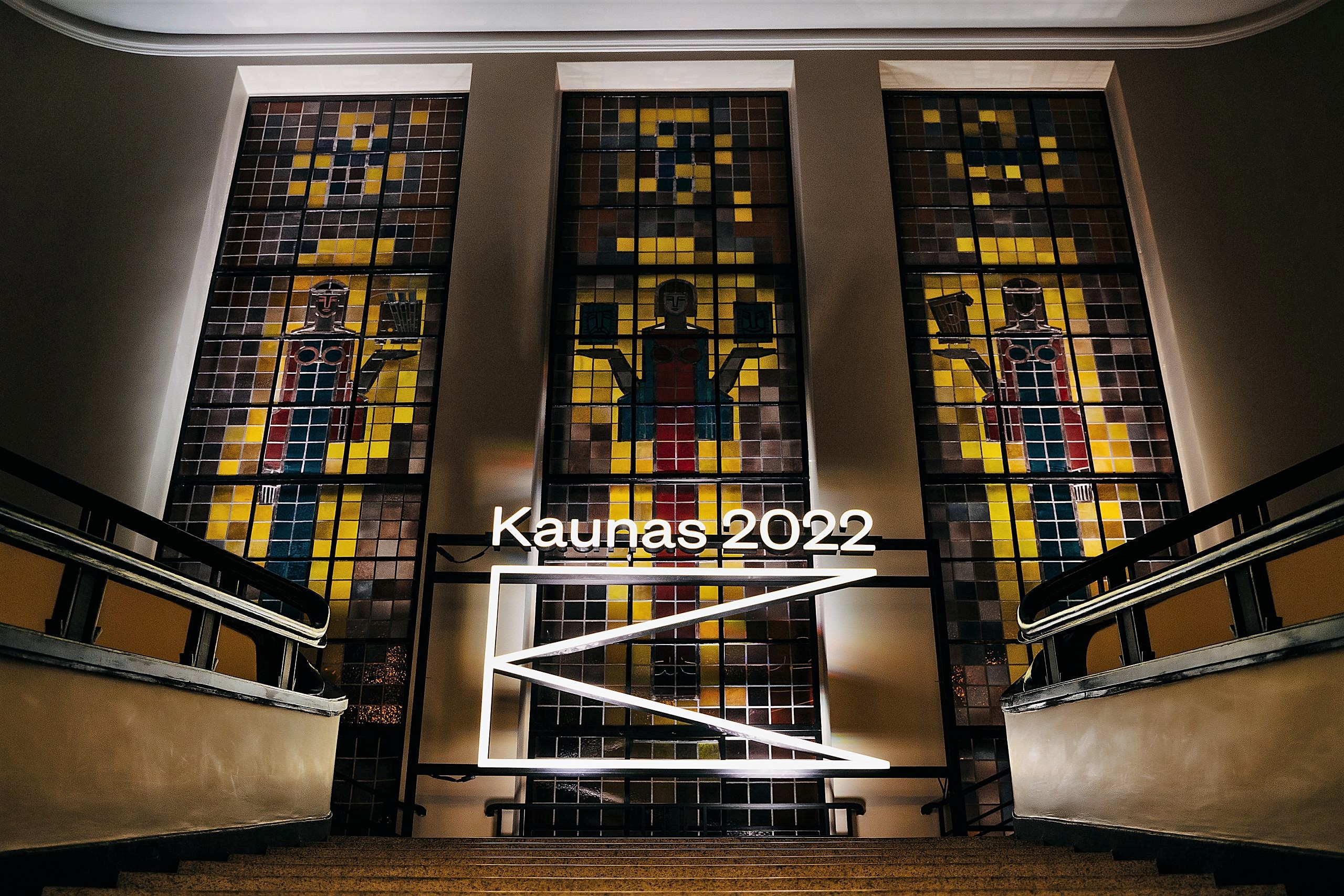
Helpful tools for preserving Modernism Heritage
Opening the conference “Modernism for the Future. Interpretations”, Vaidas Petrulis said: “Buildings do not speak, so we must speak for them.”
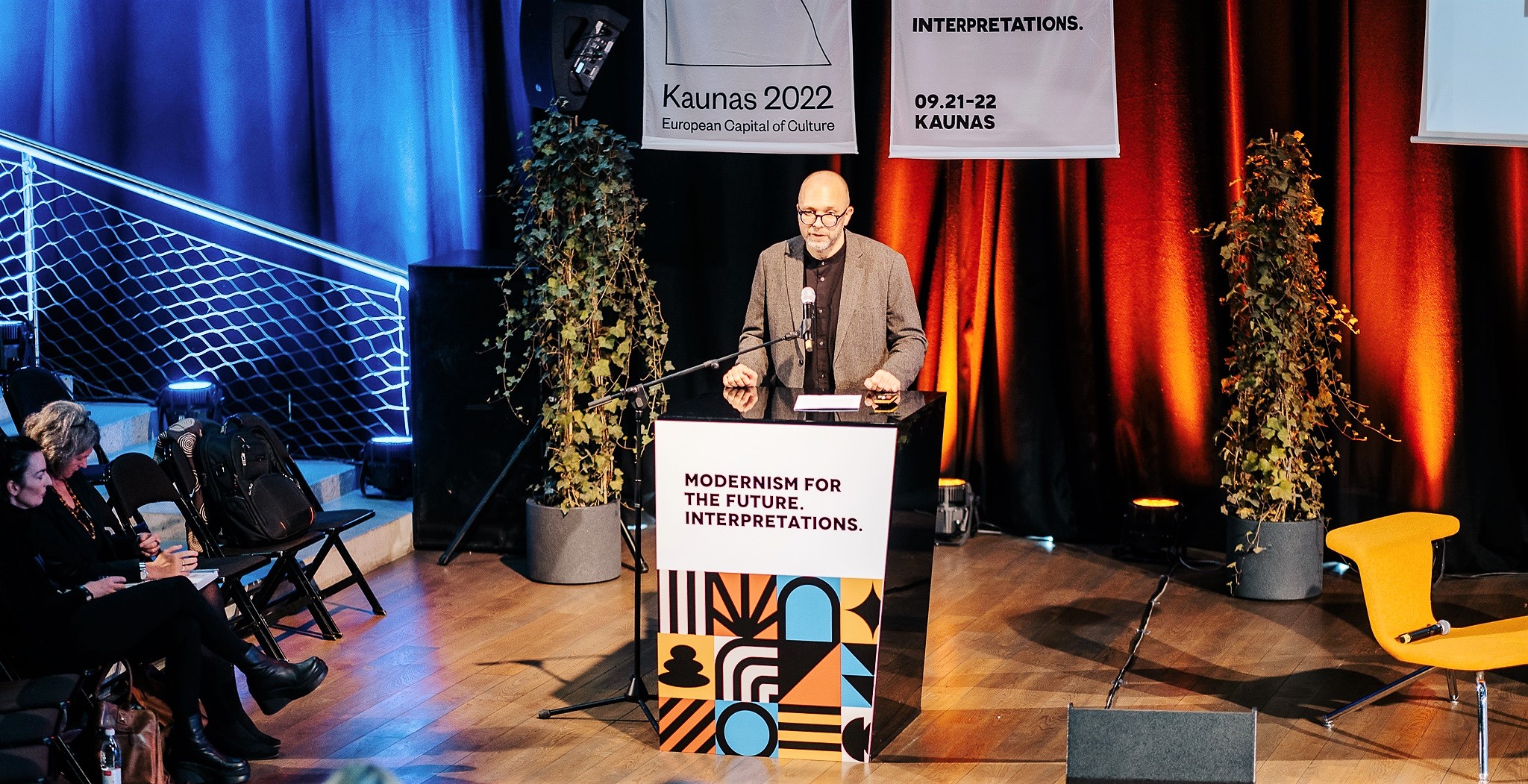
The CEO Virginija Vitkienė added: “5 years ago, no one could distinguish between architectural styles and periods. Today there are so many artistic interpretations of modernism.”
That was the key remark for evaluating the approaches to the promotion of modernist heritage. When explaining the message that Kaunas 2022 explores how the temporary becomes contemporary, Virginija Vitkiené presented the three CONs of Kaunas in this way: “By CONTEMPORARY, we mean being CONnected with the rest of Europe, to be in CONtext and to create a new CONtent for our city, our country, and our Europe.” Modernism is one of the bridges within the CONs concept, acting as “cultural heritage laboratory, where today’s interdisciplinary interpretations and histories are as important as the authentic signs of the past”.
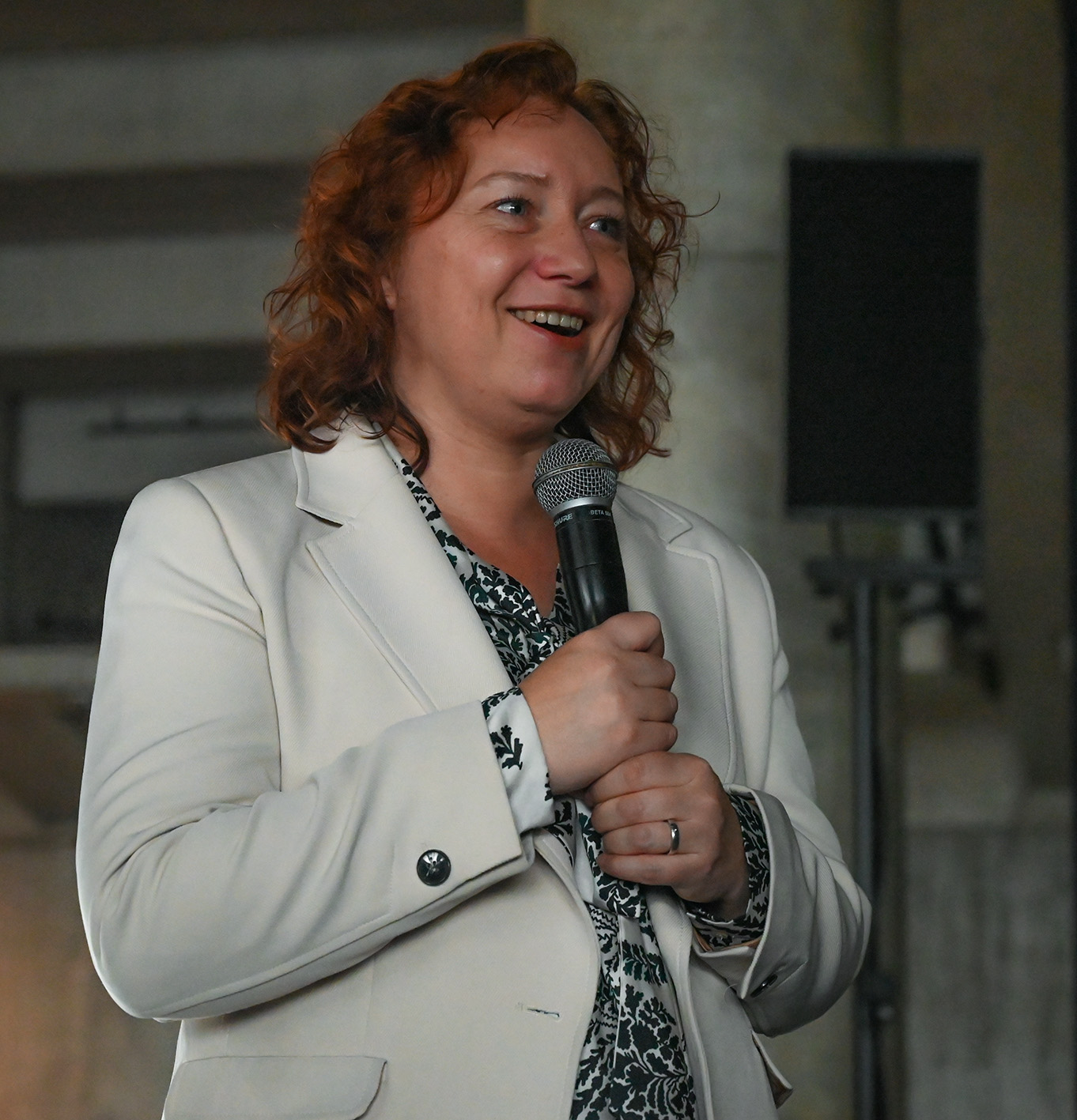
Photo credit LithuanianStories-Marina Macrì
The Conference aimed to discuss artistic interpretations of heritage based on the experiences of different cultures and regions. Speakers from different countries shared their experience of artistic representations of modernist heritage, as well as touching its preservation and valorization in times of ecological crises. The outcomes of the Conference are available as a 10-episode series of podcasts.
One of the most impressive practices was the Experimental Preservation method by Jorge Otero-Pailos, a New York-based artist and preservationist (who directs the preservation program at Columbia Graduate School of Architecture) best known for making monumental casts of historically charged buildings. He is the author of the series The Ethics of Dust, the decade-long investigation, based on cleaning dust and the residue of pollution from monuments, such as the Doge’s Palace in Venice, the Houses of Parliament in London, and Trajan’s Column at the Victoria & Albert Museum, Westminster Hall.
Otero-Pailos creates artworks that address themes of memory, history, and transition, inviting the viewer to consider monuments as powerful agents for cultural connection, questioning, and understanding. He employs material residues of buildings and sites - including airborne atmospheric dust, waterways, traces of sweat, body sounds, and maps to render their invisible meanings visible.
By conceptualizing dust as both destructive (pollutant) and constitutive (palimpsest trace) of heritage, Otero-Pailos positions the dust to be heritage in itself, a witness to past events. Pollution is “our cultural legacy,” a monument as eloquent as the great works it blackens.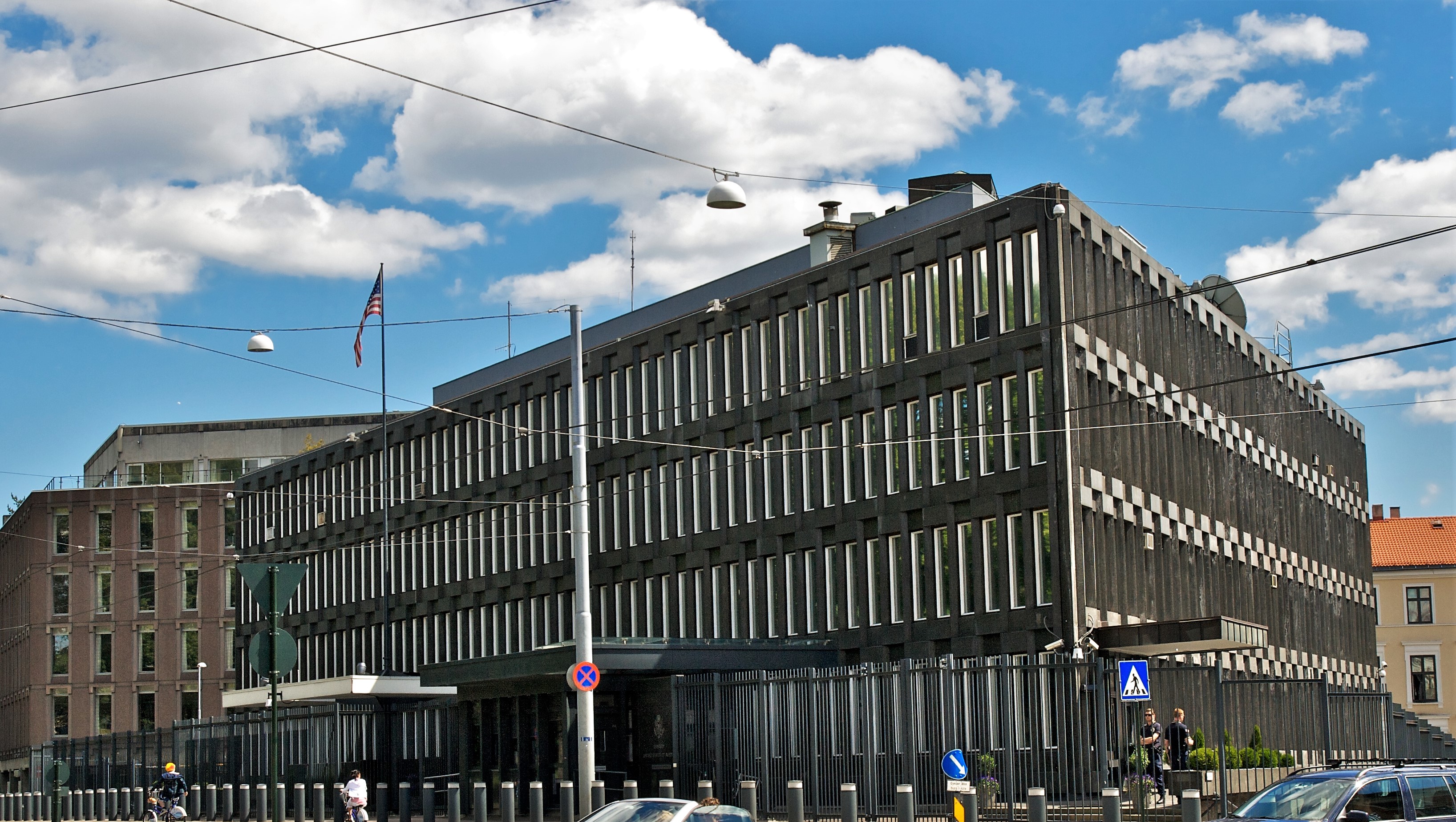
The artist focused on his project American Fence based on the experimental preservation of the security fence that surrounded the U.S. Embassy in Oslo, a modernist masterpiece designed by Eero Saarinen in 1959. The fence followed the events of September 11th, 2001.
It was recently listed as a National Norwegian Monument and sold to a private owner. The listing carefully excluded the 9/11 fence as unsightly, preserving only an idealized image of the mid-century building. The fence, however, represents an important chapter in history. Set for removal in 2019, Otero-Pailos organized a public performance where demolition machines crushed the fence in situ, in turn creating a group of large outdoor sculptures and a series of works on a more intimate scale. He named the sculptures using extracts from official treaties signed between Norway and the U.S. in the years 2001-2019.
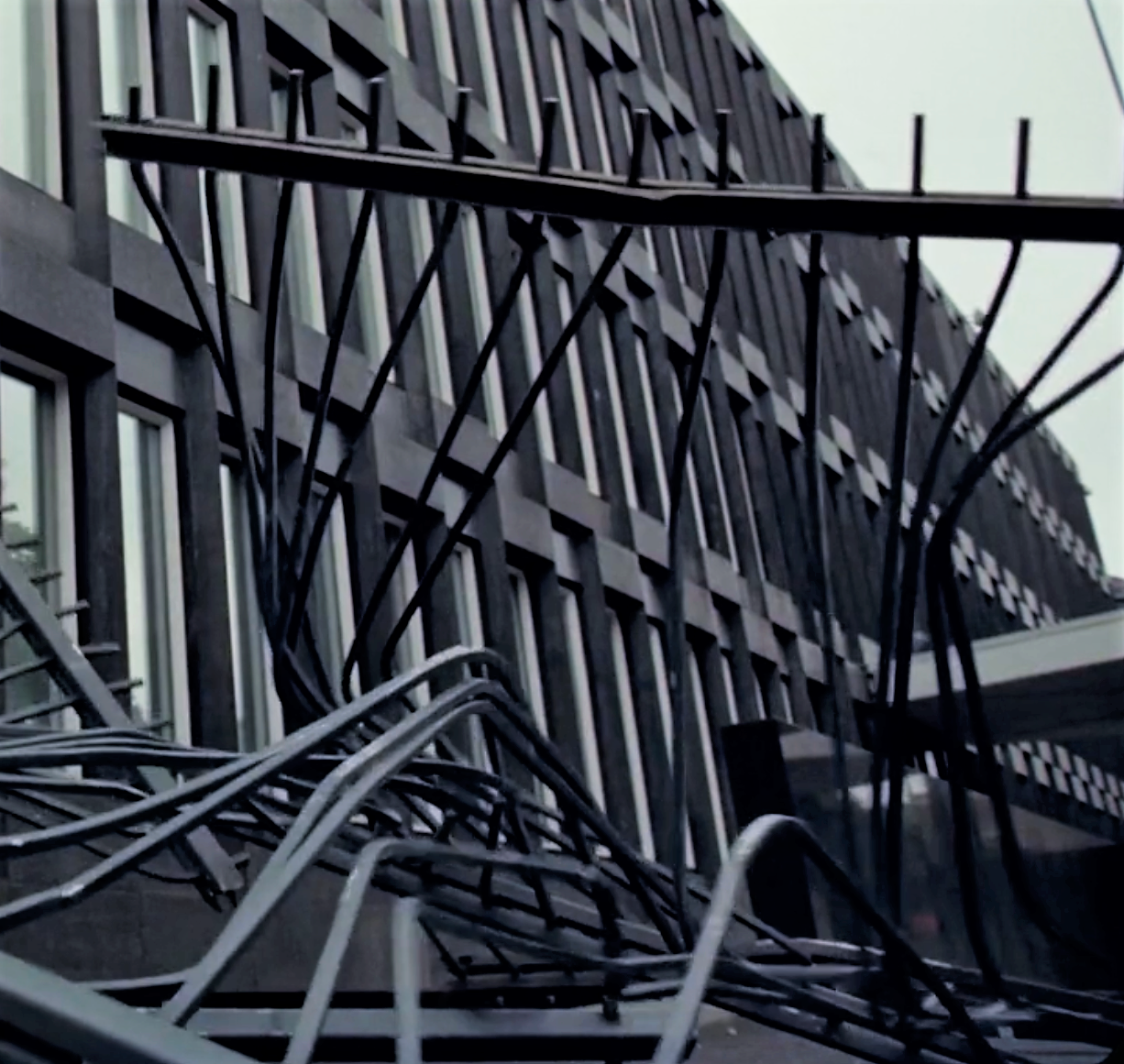
Within the frames of the Conference, ICOMOS ISC20C held a regional seminar on the topic “The Twentieth-Century Historic Thematic Framework: A Tool for Assessing Heritage Places.”
The authors of the document state that “this tool promotes broad thinking about the historical processes that have contributed to the twentieth-century built environment worldwide. Although globally structured, this framework can be used locally to survey and assess places within the context of the twentieth century and to conduct comparative analyses of places. It can be utilized and adapted by anyone involved in heritage conservation around the world. Our hope is that it will aid many forms of research, analysis, and survey work, and ultimately help sustain and conserve the heritage of the twentieth century.”
In a panel discussion, representatives of Lithuania, Poland, and Ukraine (defined as “new nation-states”) discussed how the Framework as a tool for rethinking global narratives related to 20th-century heritage can be useful for identifying new heritage sites in their countries and how it can help promote the modernism legacy.
Vaidas Petrulis: “If these houses survived the first 50 years, they should continue to exist.”
Riin Antalu (EE, ICOMOS): “The heritage of the 20th century is under great threat and this conference offers an opportunity for a more global perspective.”
Grzegorz Piątek (architecture critic, Warsaw): “The 20th century manifested its globalism also through the boom of architecture, at an unprecedented level. There is no single modernity, single (unified) modernism. This is a variety of local phenomena, which usually had a very short life span. We are talking now about the document that creates a certain framework for this diversity.”
Overall, these workshops aimed not only to develop knowledge and a broad understanding of the 20th-century heritage but also to support opportunities to present, share and extend new cases and ideas about the 20th century.
All the discussions are available here.
Finalizing the results of the Conference Vaidas Petrulis said:
"Kaunas is a case study in this sense. The Conference is part of the big mosaic of that approach. Heritage should become an actual part of contemporary culture. It`s not that should be preserved for the sake of our possibility to visit museums. It is to be more interactive, more close to the younger generation. At the Conference, we focused on the idea that the 20th century had brought a lot of disasters, suffering, injustice, a lot of ecological catastrophes.
We are not that naïve as for the “optimism of Kaunas”. It`s a very controversial part of history. When talking about the optimistic aspect, we do not intend to forget its dark sides.
And we want to discuss them. We have something to be proud of, but we have something not to let happen again. We had a session on the Anthropocene, we deliberately invited people with different backgrounds, considering the legacy of the 20th century in all its complexity."
Vaidas especially emphasized the fact that for the first time the Heritage Programme focused on the perception of heritage through the lens of art on such a large scale.
That is true. There have never been so many cultural events around architecture in Europe. The architect believes that this is the most important contribution of the Programme, which enabled to attract a larger audience. I am absolutely in solidarity with him, because we work in the same way with Kherson Modernism.

The contemporary context
The final events of Kaunas 2022 were happening in very turbulent times.
On the 25th of November, Kaunas hosted the Idea of Europe international symposium that took place at Vytautas Magnus University. It opened with a "presidential debate" with the participation of the leaders of five countries - Lithuania, Latvia, Poland, Romania, and Ukraine, discussing the future of Europe and what it means to be European. First, it is all about Ukraine as the only relevant perspective from which the European future is viewed today. And least of all, it is being formed now in Brussels, as all the presidents said rather frankly.
There were many words about European values, which, in fact, make up the European identity, but they are also evolving, because after February 24, Europe changed forever and it will no longer be the same.
Strategies for energy independence from "russian raw materials" are a priority; we must stop sighing nostalgically about the former low prices, and continue to strive for a final break with the terrorist country.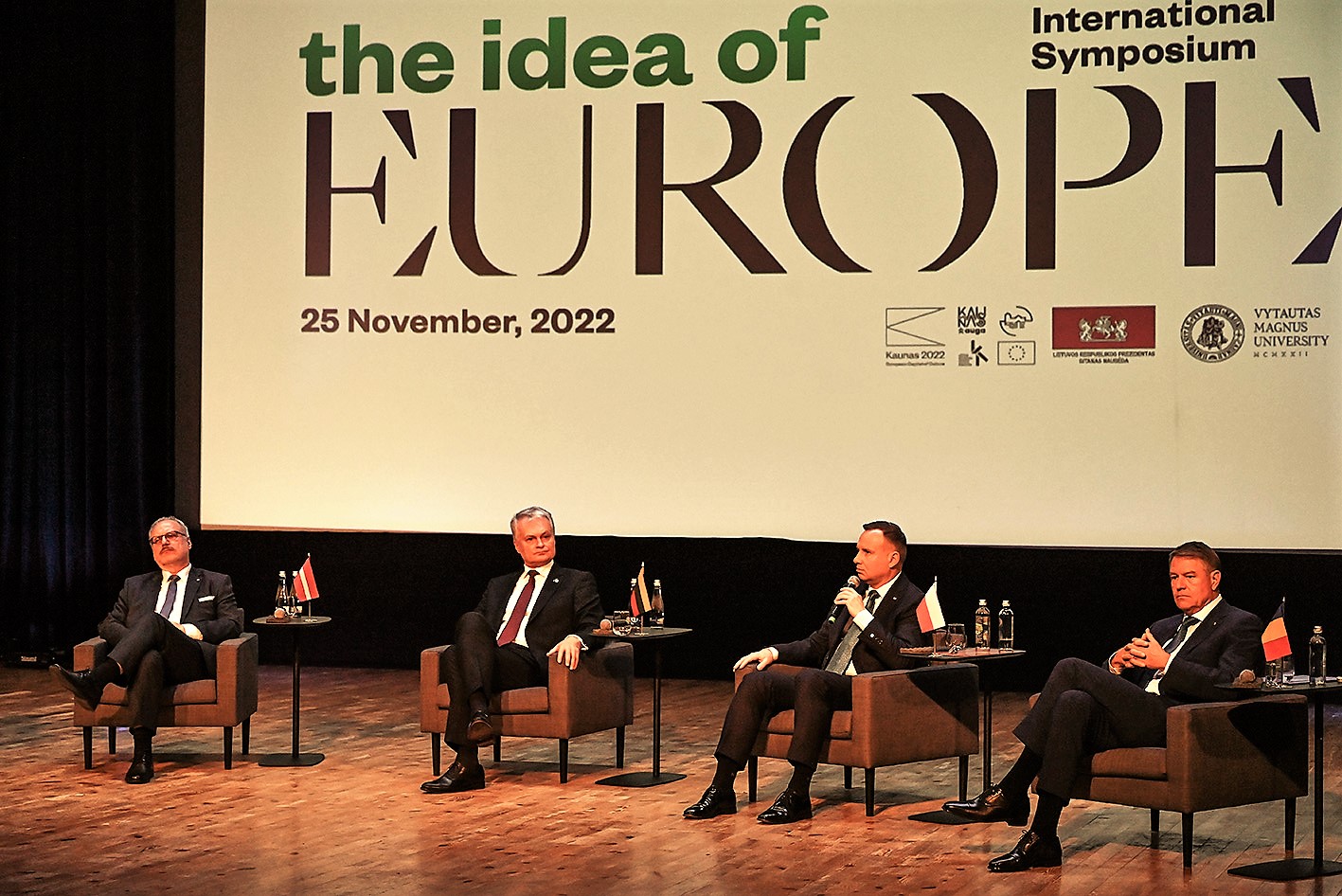
The President of Lithuania Gitanas Nausėda insisted on this: "Before the war, we tried to conduct quality negotiations, we persuaded putin to renounce his plans for war, and our businesses did not want to suffer losses... There were many discussions in the European Parliament about russia, we nurtured illusions that we had influence over it and that there is a certain algorithm on how to eliminate these threats. But now we clearly see that the sanctions are not too large-scale to stop the aggressor, we were slow and indecisive. We can no longer maintain any relations or cooperation with russia..."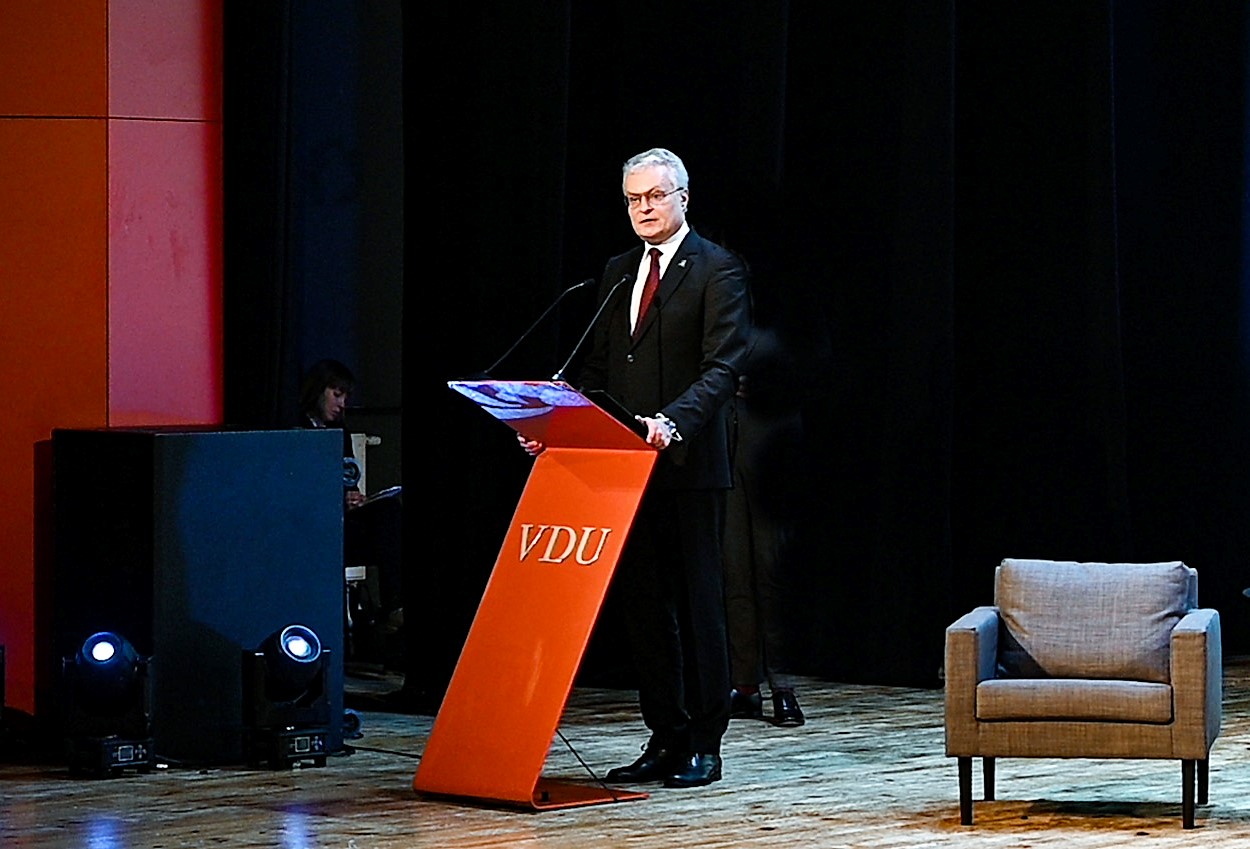
The President of Poland, Andrzej Duda, added: "We know very well what the "russian world" is. We are all currently undergoing a test to understand how we should live after February 24. Are we able to protect together with Ukraine everything that we have gained so far? We have to build a new concept of solidarity. russia is sponsoring the energy crisis. We must realize this, and not succumb to its "gas" blackmail. We have our own terminal and we are able to share with our neighbors." He and the President of Lithuania achieved the status of a candidate for the EU member state of Ukraine and are working hard to make it a reality.
Special attention was paid to countermeasures against Russian propaganda, manipulation of historical memory, and all those imperial narratives, offering all countries to join in this through education and research. The President of Lithuania reminded the audience that November 26 is the Day of Remembrance of the Victims of the Holodomors, and if almost everyone knows about the Holocaust, then the genocide through the organization of artificial famine needs more publicity in Europe and the whole world.
President Zelensky joined virtually: “There is no Ukraine separate from Europe, just as there is no Poland or Lithuania or Romania or Latvia or Germany or France separate from Europe. This is our continent. This is our life. And this is the path that we can endure. Just as this winter and this war. All Europeans together».
He concluded that Ukrainians are protecting not only themselves but also European values: “You are not helping us, you are helping yourself - and we are at the forefront of this struggle.”
The applause was wild.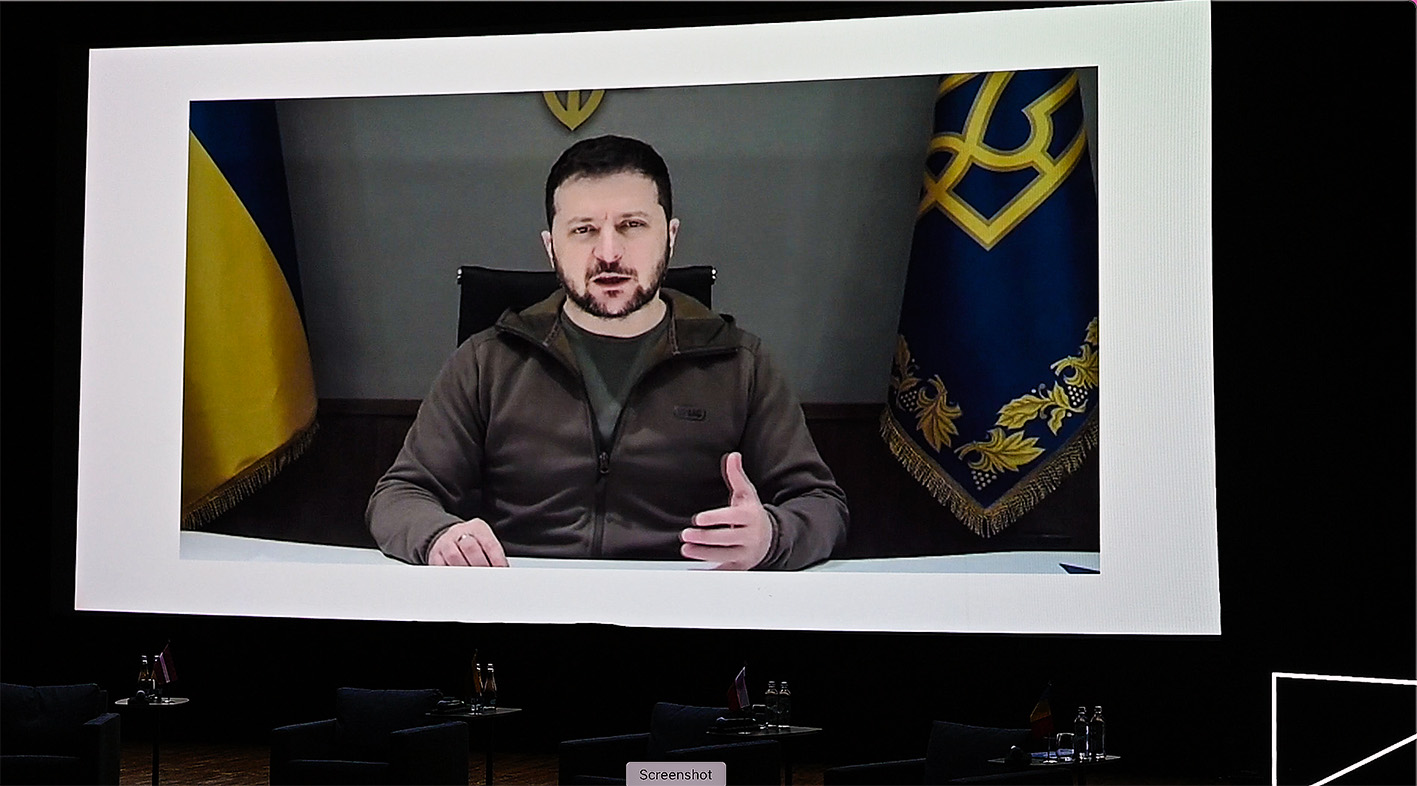
Ursula von der Leyen (also virtually) highly praised Lithuania for its comprehensive support of Ukrainian refugees and especially noted "cultural shelters", such as the Central Post Office in Kaunas (CulturEUkraine), which has been hosting our artists since the beginning of the invasion.
I was pleasantly surprised by the President of Romania, Klaus Iohannis, who spoke more than others about the importance of culture - as the best platform for solidarity and opposition to authoritarian regimes. For him, to be European is to have the power to shape the future of Europe, and one where culture will never be something "optional".
However, he did not forget about the economy, emphasizing the critical importance of ensuring the transit of Ukrainian grain. It turned out that not everyone understood the purpose of such an effort, and he once again explained in detail all the benefits for us and for the rest of the world.
In the terns of collective security, the President of Latvia, Egils Levits, expressed the opinion that when we talk about the idea of Europe, apart from the values and the cultural dimension, the geographical aspect is important. But it has long since become conditional on the distances that are used to determine which country is more European. All these stereotypes that the more eastern or northern, the more blurred European identity is, must be left behind. Solidarity and mutual support cannot be the prerogative of a few "central" countries, it is necessary to accelerate the adoption of Ukraine, Moldova, Georgia, and Bosnia into the European Union, then the idea of collective security will become more realistic: "If they want us, then our values have meaning and weight, and it is too early to talk about a crisis in the European Union. By the way, do you remember that Huntington predicted a scenario from which it was assumed that Ukraine would become closer to russia, in all senses – geographically, and politically? But this is not so, it is part of Europe."
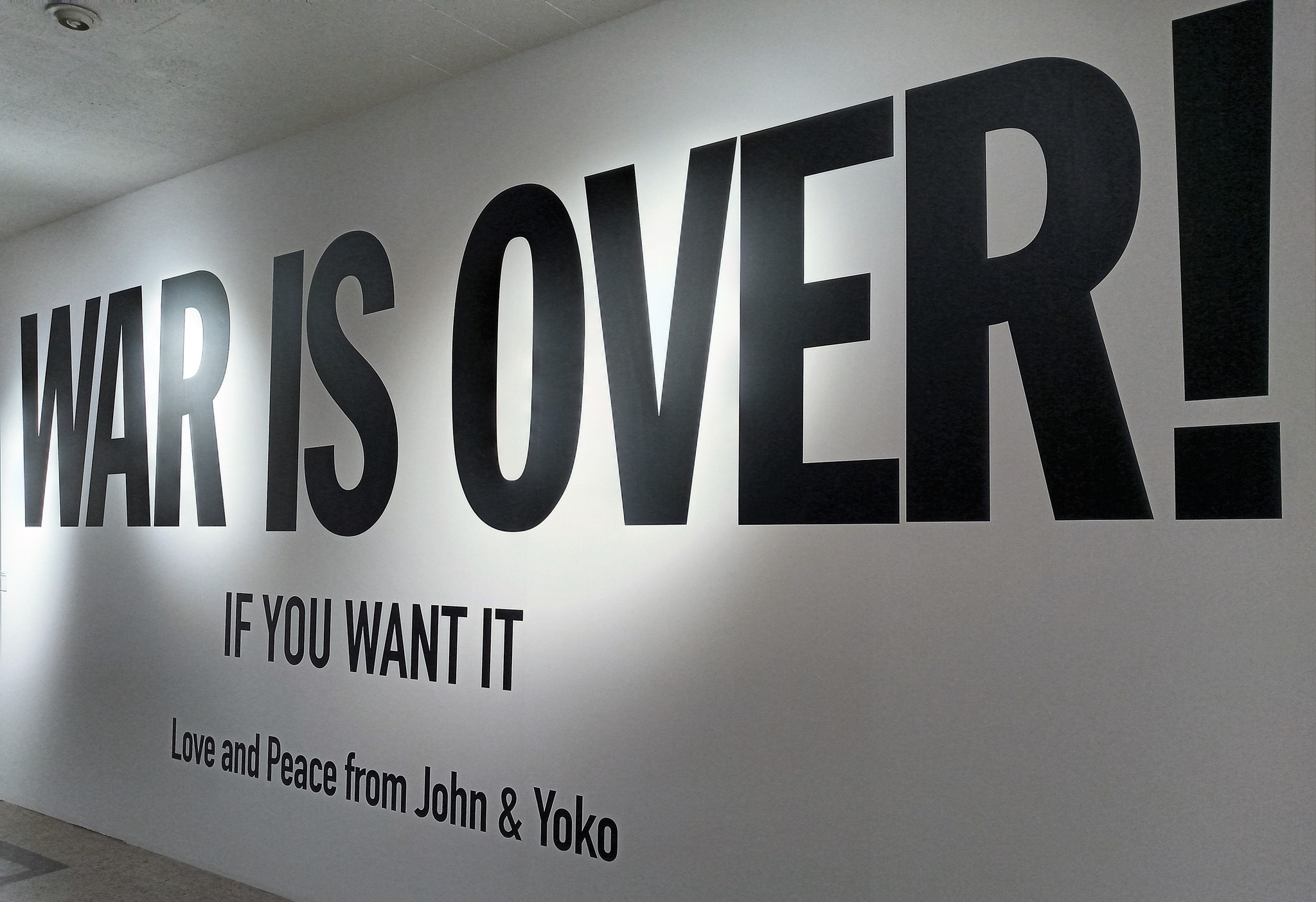
The material was prepared within the framework of Culture Moves Europe, funded by the Creative Europe Programme of the European Union, and implemented by the Goethe-Institut, with the support of the Lithuanian Council for Culture and Kaunas 2022.




